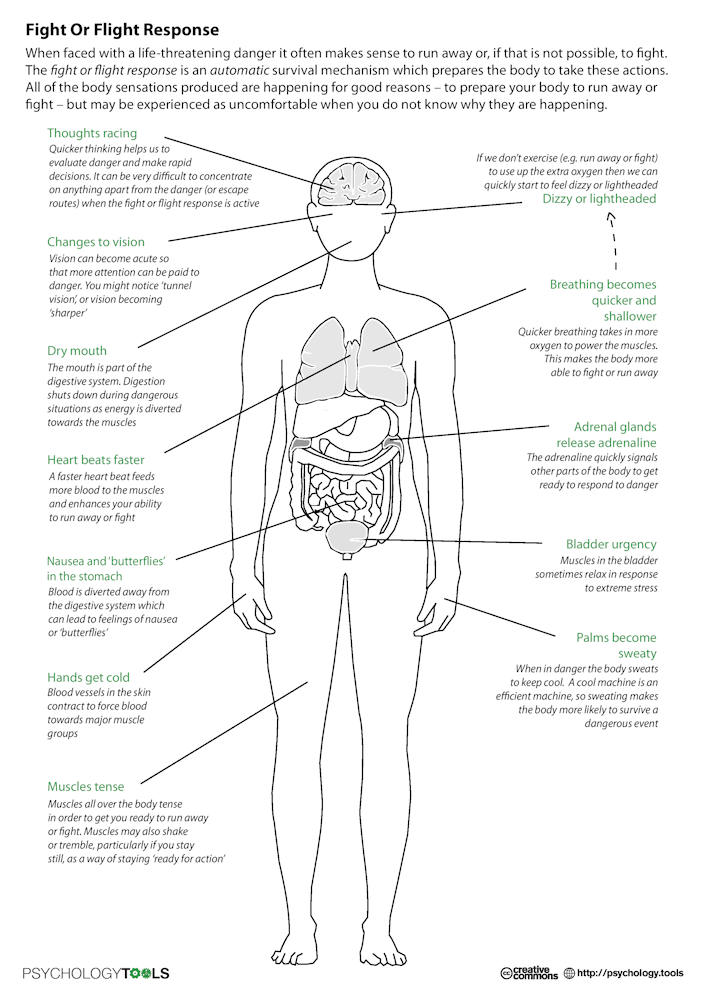Tag Archives:VIDEOS
TEDx UC Davis: Getting Stuck in the Negatives (and how to get unstuck) presented by Alison Ledgerwood, PhD (video) share
Dr. Ledgerwood’s research show us that our brains are hardwired to subconsciously focus on negative information, despite positive information to the contrary. However, when we make a conscious decision to shift our focus to positive things…things that are already there but our brains just having been paying attention to them, we can change our view of the world and of ourselves.
TEDx Talk: Feeling Good presented by David Burns, MD share
Cognitive Behavioral Therapy (CBT) is based on the premise that our thoughts, emotions, and behavior are all interrelated and affect one another. Because of this, if we learn to identify when we are having “thought errors” that distort our perception of reality, often skewing to seeing things in more a negative light, we can then Dr. David Burns is a well known researcher, clinician, and public speaker. He is one of the leaders in the development of CBT, having been trained personally by CBT’s founder, the world-renowned Aaron T. Beck, MD. In this short video, Dr. Burns uses stories from his life experience both as a clinician and as a person, to illustrate the power of CBT and how working to change our thoughts, in a real and genuine way, can have a profoundly positive effect on how we feel. CBT has become the strongest (most likely to succeed), “evidence-based” form of therapy for issues such as depression and Bipolar Disorder, various forms of anxiety (PTSD, phobias, Obsessive-Compulsive Disorder), eating disorders, and substance use disorders. This means that scientific research has been able to document that CBT really works for people.
Panic & Time Magazine's "How to Increase Mental Toughness: 4 Secrets From Navy SEALs and Olympians" by Eric Barker share
Panic. Our body’s ability to prime itself for a life-saving level of physical response, “fight or flight,” is a gift. It allows us to summon every possible physical resource we have to save ourselves from a physical threat. But, when the threat is imagined or emotional, it feels really yucky to be in physical panic mode. This is especially true because our bodies, in that moment, experience temporary physical changes (i.e. increased heart rate, quick & shallow breathing, increased blood circulation to muscles, decreased blood circulation to the “rational” part of your brain, etc. Click image on the right for more details.) that can feel scary if we don’t understand why it’s happening. However, our body naturally knows how to shift out of this mode when the perception of the threat is gone. Of course, because being in that high alert mode has our body burning off a great deal of our energy in a short amount of time, we’re left feeling exhausted in the aftermath, even if we didn’t actually fight or flee.
(If you can’t see the embedded video at the top of this page, click on the following link for the article and scroll down to the second video on the page that’s titled, “Navy SEALs Mental Training.”) The video displayed at the top of this page and accompanying article explains our body’s normal fight, flight, or freeze response and ways that the Navy SEALs and Olympic athletes train to have as much control as possible over preventing their bodies from triggering this response when they don’t want it.
Emphasis is on understanding the biology behind what is happening in our bodies when we experience fear and then using four basic skills to help our minds not be unnecessarily controlled by fear and panic:
- Positive Self-Talk
- Goal Setting
- Practice Visualization
- Use Simulations (practice)
All of these techniques are key components to CBT (Cognitive and Behavioral Therapy) and are used in therapy sessions with clients every day to treat both excessive anxiety as well as depression. And, if you struggle with “panic attacks”, the fight, flight, or freeze response is technically what is happening in your body (this involves the amygdala, hypothalamus, and adrenaline). It is a normal body function that is being triggered when there is the perception of a threat and prepares us to cope with life threatening situations. However, when it comes to fear, our minds don’t differentiate between physical threats and mental/emotional threats. But, the reality is that that the fight, flight, or freeze response isn’t very helpful when it comes to dealing with mental/emotional threats. So, the better we can use coping skills to prevent ourselves from the panicking, the more success we will have in coping with the challenges we face.
The video also mentions using relaxation breathing as the primary method of quickly recovering from when our fight, flight, or freeze response has been triggered. It talks about how particularly long exhales mimic our body’s normal relaxation mode (which is a new idea for me, I’ll have to find the time to look into the research on that point) and that the increase in oxygen in the bloodstream helps get the more logical, frontal cortex of the brain re-engaged so that you can think through your situation more rationally.
So, the next time you happen to be working on improving your CBT skills, just remember that if it works for the intense challenges that Navy SEALs and Olympic athletes face during actual physical threats, with practice, it will work for you when you’re working on not freaking out about having to do something in every day life like public speaking or taking a trip to the grocery store.
Teen Extremes: Regulating Moods in the Age of Anxiety with Dr. Marsha Linehan & Dr. Laura Kastner share
The teen years are tough ones, for both the teens and their parents! So many exciting things are going on in the brain as it develops during the teen and young adult years. Due to advances in medicine, particularly the availability of functional MRI (fMRI) brain scans, researchers have been learning so much in the last two decades. The field of psychology has been studying this information and working to shape it into practical recommendations and approaches for parents, teachers, and the teens, themselves.
In the video below, we get to benefit from the knowledge from two insightful and gifted people in the field. The first is Marsha Linehan, PhD. She is the psychologist who developed Dialectical Behavioral Therapy (DBT) and is highly regarded in the field of psychology. DBT was developed to work with people who meet the criteria for Boarderline Personality Disorder. (Note: If you haven’t yet read my view of the strengths and limitations of labeling a person with a diagnosis, I encourage you to check that out.) Over time, research has shown that DBT concepts also work well with other people who generally experience intense emotions that make them feel out of control. Not surprisingly, a lot of her ideas apply quite nicely to raising teens, particularly those teens who are having a difficult time keeping their emotions in check. Not an unusual concept in the world of adolescence, right?
The second presenter is Laura Kastner, PhD. This is the first I’ve come across her but I enjoyed her approach and her presentation. She is a developmental psychologist and able to talk a lot about what the latest research is telling us regarding what the strengths and challenges of the developing teen brain are. She goes on to give examples of how parents can most effectively intervene with their teenagers, particularly during high emotion times.
Note: I want you to be aware that Dr. Linehan’s speaks extensively about suicide. This is because, in its original form, DBT was developed to work specifically with individuals who had frequent suicide attempts. In the clinical world, these are individuals who are often intolerant of their own intense emotions and have no coping strategies to help them through. DBT helps them through. Now that DBT is an established form of therapy, research is starting to show that the techniques are just as powerful a way of helping people who struggle with intense emotions for a variety of other reasons not the least of which being the turmoil of adolescence. Just because you or someone you love struggles with “regulating” their intense emotion does not mean that they are suicidal or risk of committing suicide but because Dr. Linehan set out to make her life’s work out of working with people who experience the incredibly deep emotional pain, it is through that framework that she describes some of the many techniques that are a part of DBT therapy.
This talk explains some of the concepts you will find in a book that I recommend and wrote a review on, Parenting a Child Who Has Intense Emotions: Dialectical Behavior Therapy Skills to Help Your Child Regulate Emotional Outbursts and Aggressive Behaviors by Pat Harvey, ACSW, LCSW-C. The talk does get fairly technical at times because both of these women are not only therapists, but research scientists too. Try to not sweat over some of the more complex terms they use and just focus on the stuff the more concrete examples they give. This is a talk that was given to an audience of parents and professionals.
This is the first time that I have come across Dr. Kastner and I enjoyed her perspective so much that I’ve added her (and a co-author, Dr. Jennifer Wyatt’s) book, Getting to Calm: Cool-Headed Strategies for Parenting Tweens + Teens, to my (increasingly long) reading list. I am grateful to both of the speakers for allowing this talk to be available for free to the general public.
TED Talk: Your Body Language Shapes Who You Are presented by Amy Cuddy, PhD (video) share
Using research science to back up her ideas (in a very NOT boring, sciency way) Amy Cuddy tells us how a simple thing like our posture affects us (our body chemistry and how we perceive ourselves) and other’s perceptions about us. Increasing how mindful we are about our body language, can impact things ranging from job success to that special person saying, “Yes!” when you ask them out for the first time. Through pictures, contemporary media clips, and interactions with her audience, Dr. Cuddy demonstrates what she has learned from her colleagues’ research and her own in a way that is easy to understand and entertaining to watch. I guarantee you’ll be sitting up straighter by the end of the video!
ADDENDUM (March ’16): The Effect of “Power Posing” Likely Depends on Context
Transgender Videos & vLogs on YouTube share
 I have an ever-growing playlist on my YouTube Chanel (well, really many, many ever-growing playlists) of videos mostly by people who are trans. It has basic information (like the role of pronouns in being respectful of people’s gender identity) and relatable stories (like a son interviewing his mom about what it’s like for her to have a trans son). Generally speaking, videos can go a long way in helping to see the humanity in other people and understand in a more intimate way the challenges and victories that people can face. This playlist is no exception.
I have an ever-growing playlist on my YouTube Chanel (well, really many, many ever-growing playlists) of videos mostly by people who are trans. It has basic information (like the role of pronouns in being respectful of people’s gender identity) and relatable stories (like a son interviewing his mom about what it’s like for her to have a trans son). Generally speaking, videos can go a long way in helping to see the humanity in other people and understand in a more intimate way the challenges and victories that people can face. This playlist is no exception.








